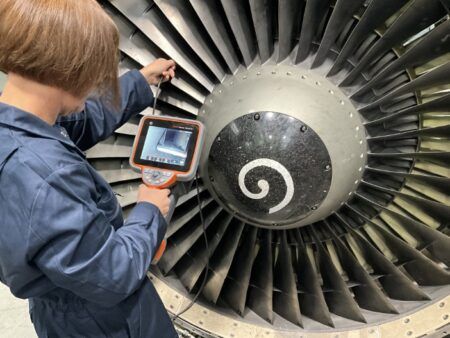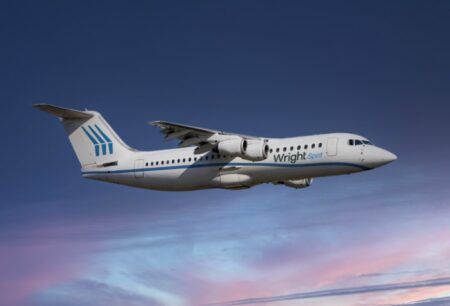Bright, risk averse, no-nonsense engineering minds don’t like to be pinned down by pesky journalists asking awkward questions, but when it comes to contemplating hybrid and electric flight, an obvious place to start is to ask just when are we likely to see such aircraft enter commercial service.
A precise answer is hard to provide, given all the variables such a scenario involves, and perhaps this is why Andy Anderson, Airbus Group’s recently appointed chief operating officer for the Corporate Technology Office, having previously served as acting chief technology officer, is reluctant to respond to the question, at least without adding a little more context. He settles on the following: “We would like to have something in the region of a 70- to 90-seater within 30 years,” he says. “It would not be purely electric; it would probably be a hybrid configuration.”
Anderson envisages such an aircraft as the natural conclusion of the Airbus Group’s ambition of ultimately delivering emission-free quiet flight – a goal that has spurred the manufacturer into beginning work on a dedicated test facility near Munich, Germany, to focus on the development of new electric and hybrid aircraft propulsion technologies. With construction due to start early next year, the E-Aircraft System House is scheduled to open by late 2018, when it will be jointly operated by Airbus Group Innovations (the Group’s global innovation network) and the company’s three divisions: Airbus, Airbus Helicopters, and Airbus Defence and Space.
However, the aircraft manufacturer’s exploration of electric flight is already well underway, with much of its effort to date embodied in its all-electric, twin-engine E-Fan demonstrator aircraft, which successfully crossed the English Channel in July 2015.
“Now we’ve taken that same aircraft and, in a very agile technology development process that started in February, we have converted it into a hybrid version that flew for the first time at the end of June this year,” explains Anderson. “So the first step that we’ve done is to take the all-electric E-Fan and change its architecture slightly and make it into a hybrid [with an electric/gas engine]. We can now start testing how a hybrid architecture actually works.”
Known as E-Fan 1.2, the experimental hybrid aircraft in question was on static display at the 2016 EAA AirVenture show in Oshkosh, Wisconsin, USA, in July. “We did not fly it in Oshkosh because we haven’t got enough hours for certification yet,” explains Anderson. “We did this conversion in just four months – now it’s back from Oshkosh, we will continue with the certification program of that aircraft as an experimental aircraft with the aim of flying it successively this year to understand the different aspects that one has to consider when one is investigating hybrid flight.”
Of course, it’s quite a leap to go from a two-seater aircraft such as the E-Fan to a commercial passenger jet, but Anderson sees it as a crucial first step: “E-Fan is one of the demonstrator blocks in the overall E-Systems roadmap,” he says. “Everything we learn out of E-Fan – be it E-Fan 1.0 as a pure electric aircraft or the current E-Fan 1.2 hybrid version – all of that learning flows directly into the E-Systems program.”
Considerable challenges
One obvious stumbling block along the road to electric flight is presented by the current ‘state-of-the-art’ in battery technology. “The market for qualified batteries of the size required for commercial aviation is just not there,” admits Anderson. “The batteries are all going into other applications at the moment. Obviously there will be batteries [on the aircraft], but they will be in a configuration that allows for emergency situations or take-off and landing, which means that for the immediate future, we are focusing on hybrid configurations.”
However, Anderson believes batteries could easily provide all the power necessary for much smaller aircraft, such as the E-Fan: “If you think of general aviation, you’re looking for something like a three-hour endurance, and I think the industry will get there quite quickly in providing that,” he notes. “But when we talk about a 70-90-seater aircraft, I don’t think there will be the battery power to fly a sustainable 1,500-2,000km stretch. Obviously if something miraculous happens in the battery world, which is perfectly possible and so we would hope, then the architecture that we are working on at the moment will not change. We will simply leave the fossil-burning motor component out.”
With pure electric flight for larger aircraft currently ruled out in favor of hybrid solutions, Anderson must also consider the type of fuel such a system will use. “We are just watching at the moment and helping form what the fuel might be for the hybrid component or the motor component,” he says. “Airbus Group is not a fuel manufacturer, but we keep a close eye on what is happening in the area of fuel cells, and so on. We know that there will be a motor – and so what we are focusing on is getting the whole functional chain working – from motor to electric system in a distributed form such that we can accommodate whatever becomes the accepted fuel in the future. This could be a simple biofuel that cuts down the mineral kerosene part, or some other fuel source. Whatever it is, we will help promote it in terms of a green future and a better environment.”However, Anderson is of the opinion that any future hybrid passenger jet will need to take off and land using electric power only, to address likely legislation governing airport noise. “What we’ve also seen is how important the noise aspect will be,” he says. “Therefore we’ll probably aim to take off and land purely electrically, before switching to hybrid operation at cruise height.”
Testing focus
Anderson is reluctant to give too much away with regard to the details of ongoing testing work, but says valuable lessons have already been learned from E-Fan, particularly with regard to e-FADEC, the optimized electrical energy management system integrated into the aircraft that automatically handles all electrical features, thereby simplifying the monitoring and controlling of the systems, and reducing pilot workload.
“E-Fan is a testing platform,” he says. “It’s a demonstrator that we fly and it has helped us test electrical distribution; we’ve understood how the e-FADEC energy management system works, and what we need for e-FADEC. Now E-Fan 1.2 is back from Oshkosh, we will start testing the hybrid configuration. In parallel, at the E-Aircraft System House and at our existing test facility in Ottobrunn, Germany, we have ground demonstrators that are testing motors and generators, and coming up with the requirements that we need to have sizeable ‘building blocks’ that we can use in larger aircraft.”
The ‘size’ of some of those building blocks undergoing component testing, at least in terms of their energy output, is considerable: “It goes from a few hundred kilowatts up to about 10MW,” says Anderson. “That’s the region we want to go up to for doing ground testing on. Just about every division in the Airbus Group has one or other project that will use the E-Aircraft System House to test a component or a functional chain. It’s not only commercial aircraft, we have drones and we have some helicopter work going on, and that’s why you get this broad range from a few hundred kilowatts all the way up to 10MW.
“The reason we are going to 10MW is that although this is greater than what you would need for a 70-90 seater, we don’t want to necessarily limit ourselves in our research activities. If you go down into the lower power categories, we have tested a whole host of motors for their end generators and for their performance ratio [kilowatts per kilogram], from all sorts of different applications, from electric motor bikes to racing cars. We do this to understand how that technology is moving. We can then scale that up into the megawatt range that we need to power a future 70-90 seater, where we will need at least a couple of megawatts per wing. Ultimately, we want to test electrical distribution, control of motors, control of distributed propulsion and eventually the complete large electrical functional chain.
“There are so many components, and just about every component in the electrical chain is new. So we’re testing to see how to get those components into the most efficient and powerful configuration. Materials for motors, generators, cabling and power switches will also play a huge role when it comes to the design of these components for the future.”
Exciting times
E-Aircraft System House represents a significant investment for Airbus Group, and although Anderson won’t be drawn on financials, he is willing to talk staff numbers: “What I can say to you is that by the middle of 2017 we will have more than 200 people working on electric and hybrid propulsion. At the moment there are in the region of 60 to 65 staff working either full- or part-time, but by next year we will have more than 200 people working in the program, which we do in partnership with Siemens. I think this shows just how committed Airbus Group is to meeting the challenges and requirements regarding carbon dioxide and toxic gas emissions, as well as noise emissions. In 2010, we signed up to a 75% reduction of CO2 emissions by 2050 compared with the values for the year 2000, in a market that’s growing at around 4% per year. We have a huge commitment to meeting these targets, and I think our investment demonstrates that.”
Finally, when one considers the implications distributed propulsion enabled by electric flight could mean for aircraft design, it’s hard not to get excited, and Anderson does little to douse this enthusiasm: “The minute you can go to distributed propulsion, you have the opportunity to change the envelope of the aircraft substantially,” he says. “When you can control the motor or a number of motors independently, electrically, it has a huge impact on how large an area you need for the tailplane, for example, and what the tailplane configuration could look like. There’s a whole host of things to come out of that, which I think in the very long term will open up the envelope for aircraft in general.”




